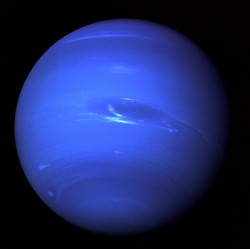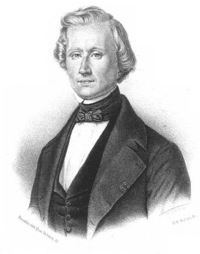Galle at the Berlin observatory. Earlier that evening, French astronomer Le Verrier was able to determine that an eighth planet did exist and where it might be (he was studying the disturbances in the motion of the planet Uranus). He shared this information with Galle, and it was that same evening that Galle and his assistant discovered it. It was proven to be a planet as it was watched closely over the next 24 hours.
Neptune is the eighth planet from the sun, has a diameter four times that of the earth, and it was named for the Roman god of the sea--Neptune (it is a blue gas giant!). It has eight known moons (hopefully this information is accurate as of today), and Triton is the largest. It is also a planet with rings--three bright and two dim. It orbits the sun once every 165 years. In 1989, Voyager II became the first human spacecraft to visit Neptune.
I would love to fill this space will all sorts of facts, but instead, I will leave you a couple links to check out:
http://www.universetoday.com/21581/neptune/
http://www.history.com/this-day-in-history/eighth-planet-discovered
You will also note that I have included an infographic. They are the wave of the future, and I was pleased to find one that talked about the known universe. Enjoy!






I learned something new today!
ReplyDeleteHave a great weekend!
<><
http://christiecottage.blogspot.com